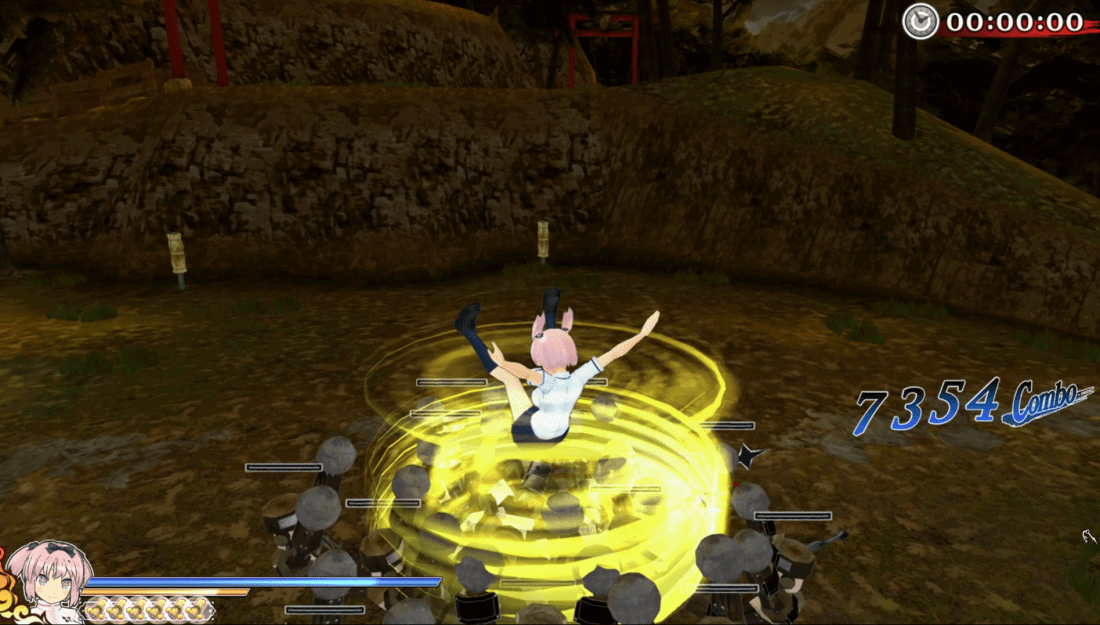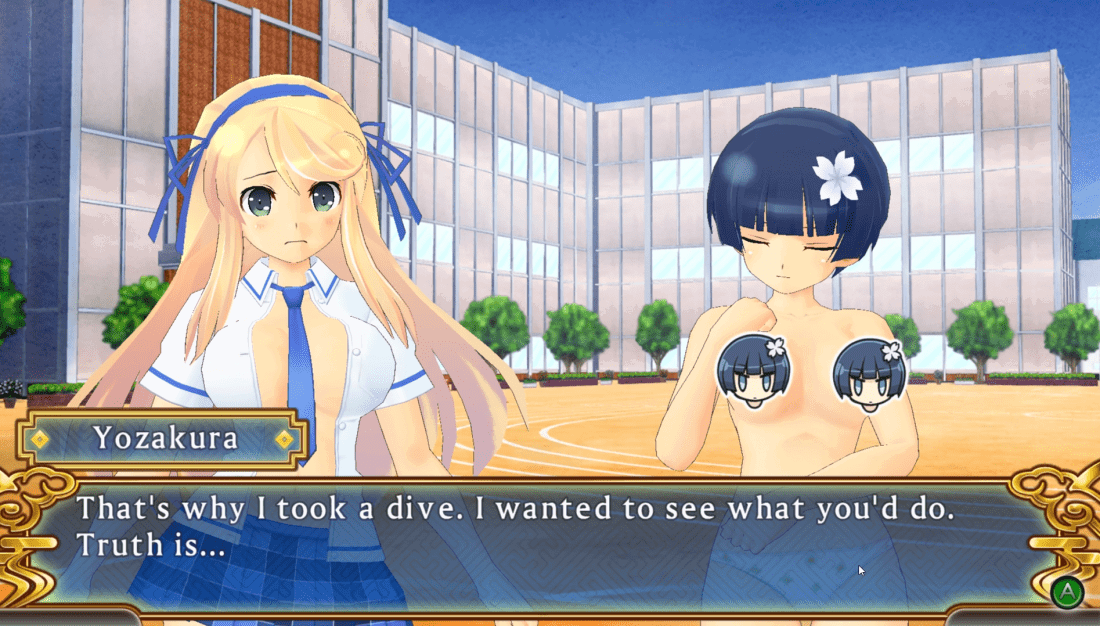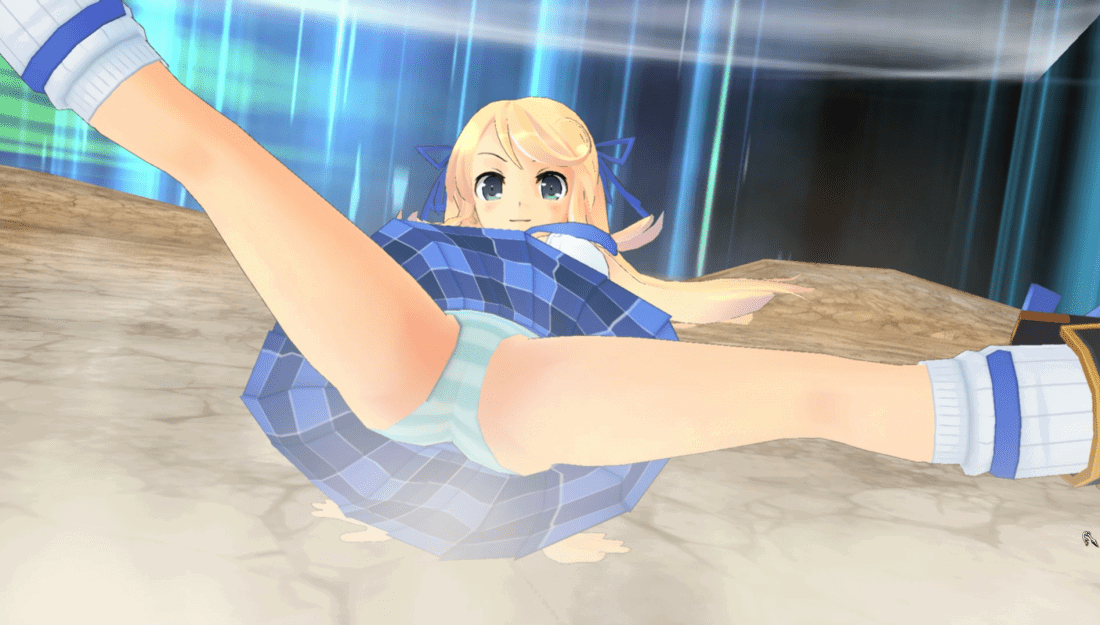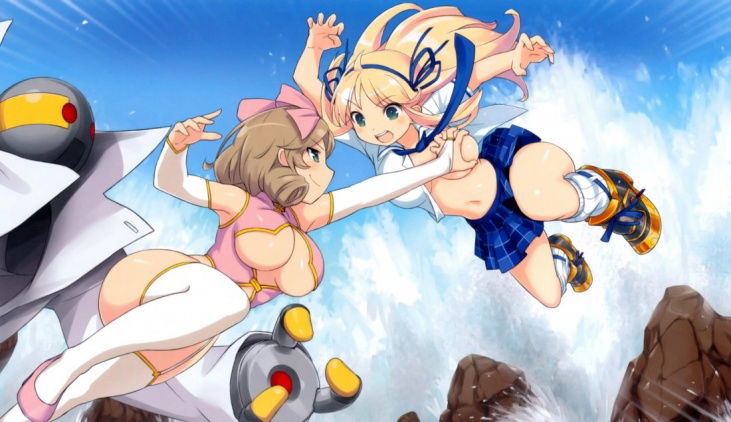I have a bit of a confession to make. Though the Senran Kagura series very near and dear to my heart, I was not on board from the get-go. Rather, I first heard about the games when Senran Kagura 2: Deep Crimson was announced for localization out west. With that said, before Shinovi Versus was released on Steam, I had not touched it nor Senran Kagura Burst, the original entry in the series. What difference does this make?
Well, in my reviews for the two titles I played (which you can find here and here), I made a point of saying that the variety of characters and how often they cycle was refreshing and ultimately a high point for the games (even if it occasionally caused level/difficulty-based issues). With that said, these later titles use a single unified storyline involving all characters whereas the first two featured separate stories for each faction; drastically lowering the variety of characters in use for five to six hours at a time. How does the series hold up without the applied variety that kept the game perpetually fresh? Only one way to find out.
Let’s have a look.
Game Name: Senran Kagura: Shinovi Versus
Platform(s): PC
Publisher(s): Xseed/Marvelous Entertainment Inc.
Developer(s): Tamsoft
Release Date: 6/1/2016
Price: $29.99
If you’ve at least heard of the Senran Kagura series, you know what to expect. For the uninitiated, welcome to a world of busty ninjas whose clothing tears off when they take too much damage. Of course, that’s not to say the game is a shameless cash grab aimed at maladjusted teens; the entirety of the Senran Kagura series is a surprisingly well-balanced mix between a musou (Dynasty Warriors-style game) and a visual novel. This creates a strange pace from being told a story through text and half-animated character models to mowing down hordes of enemies with one of the several unique nubile ninjas.
With that said, the story that’s conveyed becomes quite important, as generally more time is spent in the visual novel format than the musou style due to both the sheer amount of information being conveyed and the musou genre’s inability to convey much story through gameplay. It is here that Shinovi Versus does not quite measure up to its successors.

On a basic level, a battle royale event is soon to begin, and the game’s four factions (Hanzo Academy, Gessen Academy, Hebijo Candestine Girls’ Academy, and Homura’s Crimson Squad) all have their reasons to compete against one another (even if just to defend themselves from another faction). The subject matter is fairly simple, but it stands to reason due to the story doubling the series’ roster from 10 to a hefty 20, meaning that there’s less time for character development thanks to the amount of introduction that needs to get done. This isn’t the biggest issue with the story, however; the separate story modes for each school are what prove to detract most from the narrative.
Earlier I mentioned that thanks to this format, variety is cut due to each story only making use of that faction’s characters. Though this does cut down on the amount of time the game feels fresh in a single sitting, the core issue runs much deeper: tropes and formulas.
Naturally, the easiest way to introduce new characters in a format where only the old characters will be playable is to make the newcomers stronger, causing the original cast members to improve and rise to the occasion.
However, how can one convey that these newcomers are stronger? Some games force a fight that cannot be won or an extremely difficult fight that offers bonus content on victory and still progresses upon defeat; this won’t work here because Senran Kagura revolves around rivalries, meaning that for each character, the player will have to take two or three forced losses/overly difficult fights. That just won’t work out. Rather, the game resorts to much more hokey methods. Hanzo Academy’s story is particularly guilty of this, as every interaction with a new character goes exactly the same: the rival challenges the hero, the hero barely wins, the rival laughs off the fight or otherwise makes it known that they weren’t actually trying before taking off. As it stands, the trope reeks of laziness and/or lack of concept.
It really does hurt to say, but the restricting the player to one school per story simply brings the entire experience down; without it, the player could have gained control of any newcomer in question and still gotten the same point across, free of the same tired excuse as to why the hero managed to come out on top despite being outclassed.

Story gripes aside, the combat is as satisfying as one could expect from the genre; simple and stylish combos with varying attack strings and three super moves (secret ninja arts) per character. Though the story does hamper the feeling of variety, every character does feel entirely unique, offering a myriad of different weapons and fighting styles sure to please all sorts of tastes (which coincidentally can also be said of the girls themselves). With that said, it’s important that the player has an interest in the visual novel format. All dialogue and plot are served through this medium, and though the high-octane combat is satisfying on its own, the narrative and character interaction that the series offers is paramount to the intended experience, and truly elevates the game’s soul.
As one would expect, there is a great deal of pride placed in the art (and jiggle physics) in the game. All of the characters are vastly unique, practically dripping with personality, though walk cycles are a bit stilted. Similarly, the environments and visual novel backdrops are all beautifully made, offering a world that for the most part does not distract from the characters for sheer quality or lack thereof. Even the soundtrack offers loads of charm and ambiance throughout every moment of the game.
If there’s one point of contention on this side of things, it’s that there are a limited number of animations for characters in visual novel sequences, and it becomes quite obvious at many points throughout the story. Regardless, what is provided is much better than the nothing that we could have gotten, or even the 2-d conversational stylings offered by the Hyperdimension Neptunia franchise.
That, and the fact that something went wrong with the intro cinematic in the port causing massive screen tearing. Maybe it’s a personal issue, but I couldn’t find options that fixed it.

Games of this type always inspire the same closing sentiments, but it really does need to be said. Though the game is good in terms of what it could potentially be, the source material is niche in the extreme. With that said, the gameplay is good, and the story gives a good deal of context to the characters that fans of the series have come to know and love. In all, Senran Kagura: Shinovi Versus is a must-buy for pre-existing fans and those who would be interested in the subject matter to begin with. For those on the fence or those trying to convince others of the series’ merits, however, I would recommend turning to either Deep Crimson or Estival Versus; though you lose out on story, the character interaction and story are better for needing less introduction, and variety in characters in the story is vastly improved (you can always come back to the earlier titles for the story once you’re hooked).
*Review copy was provided by the publisher
Senran Kagura: Shinovi Versus
Senran Kagura: Shinovi Versus is somewhat hard to judge. Though the interactions with the original 10 characters are strong, the introductions of the 10 newcomers are fairly weak. With that said, once introductions are over, interaction becomes strong again. Not as strong as the later titles, but that stands to reason as series improve over time. If you’re a fan of other titles and simply did not own a vita, this game is worth picking up. If you’re new to the series and are willing to stomach the slower and less varied story offered here to better enjoy the later games, it’s worth picking up then as well.
Pros:
- Same ninja girls we know and love
- Strong plot-based character interaction
Cons:
- Per-faction stories cut variety
- Character introductions are lacking
-
Nubile Ninjas, Cuddly Kunoichi, and Sultry Schoolgirls


